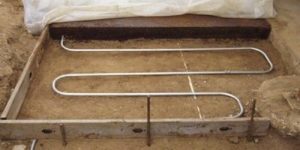 Essroc Cement Corp. has brought concrete that cleans itself — and the air around it — to the United States.
Essroc Cement Corp. has brought concrete that cleans itself — and the air around it — to the United States.
Essroc recently began North American production of its photocatalytic cement, TX Millennium. The cement line consists of two products: TX Arca cement, which gives concrete the capability to self-clean, and TX Aria cement, which adds the ability to combat environmental pollution. Both cements are available in grey and white.
The science behind the products involves a hydraulic binder with photocatalytic properties. As photocatalytic cement responds to the UV rays in sunlight, oxidation accelerates in the concrete, ultimately speeding up the rate the concrete will decompose pollutants that come into contact with its surface. Organic molecules are broken down, while inorganic materials have a tougher time sticking to the concrete.
TX Arca is billed as an “architectural line” of cement designed for the construction of striking high-end architectural works. Photocatalysis gives Arca the power to destroy organic and inorganic contaminants that are discoloring the concrete surface. The cement dramatically enhances the looks of a beautiful building over the years by empowering it to keep itself clean using only sunlight and chemistry.
TX Aria is an “environmental line,” marketed for use in regions troubled by smog and other urban pollutants. Aria is self-cleaning, but on top of that, it responds to and destroys airborne pollutants.
Essroc Cement Corp. is a North American subsidiary of the Italcementi Group, an Italian company. The technology for TX Millennium was developed with more than a decade of research by Italcementi’s Technical Research Center in Bergamo, Italy. TX Arca debuted in 1996 when it was used in precasting three “sails” that are a key feature of the Dives in Misericordia Church in Rome, designed by Richard Meier. TX Aria is a new product.
Photocatalysis is attracting attention from researchers and industry experts worldwide for its air- and water-purifying and antibacterial properties, and the possibilities extend far beyond clean concrete. In Japan, where the first products featuring photocatalytic properties were launched, the technology has been used to make self-cleaning lamps, car coatings and construction materials, fog-resistant mirrors and glass, antibacterial tiles and fibers, and air purifiers.
Contact: Essroc Cement Corp., a subsidiary of the Italcementi Group
(610) 837-6725
www.essroc.com
















